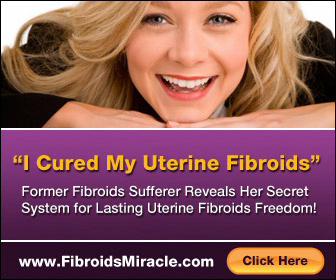Fibroids are noncancerous lumps that grow in a woman’s uterus.
The size may be as small as a pea and can grow as large as grapefruit. Large sized fibroids can cause severe pain and menstrual bleeding but most cases do not show visible symptoms.
About eighty percent of women suffer from uterine fibroids and majority remain undiagnosed simply because sufferers aren’t aware that they have the condition.
What are the types of fibroids?
There are several types of fibroids based on its location on or inside the uterus:
- Intramural fibroids. This is the most common type of fibroids. The intramural fibroids grow inside the uterus. They can develop and grow larger causing your uterus to expand.
- Subserosal fibroids. These grow outside the uterine walls, called the serosa. They can potentially develop into pedunculated fibroids, which can grow big enough making the uterus look bigger on one side.
- Pedunculated fibroids. The subserosal fibroids can develop a slender base stem that acts as support to the fibroid. The stems are referred to as the pedunculated fibroids.
- Submucosal fibroids. This type grows in the middle muscle layer of the uterus or the myometrium. This is a rare type of fibroids.
Anterior and Posterior Intramural Uterine Fibroids
The intramural uterine fibroids have three types:
- The Anterior intramural which grows on the front of your uterus.
- The Posterior intramural fibroid, which is located at the back of your uterus.
- The fundal intramural fibroid, which os in the upper part of the uterus.
Regardless of its location, there is no known cause as to why women suffer from intramural uterine fibroid.
Most clinical studies attribute the development of uterine fibroid to hormonal changes in the estrogen and progesterone, as well as the genetic make-up of a person.
Treatment of intramural uterine fibroid
Women with mild intramural uterine fibroid may not exhibit any symptoms at all.
The treatment a woman chooses will largely depend on the size of the tumor, location of the tumor, the female patient’s age, and if she wishes to become pregnant in the future.
There are several options to choose from when planning to treat intramural uterine fibroids:
- Hormonal medication that controls balance of the estrogen and progesterone.
Example of this is the Selective Progesterone Receptor Modulation or the SPRM, which changes the effect of progesterone in your body.
Another example if the Gonadotropin Releasing Hormone or the GnRH Agonists, which helps block the body’s production of estrogen and progesterone.
These treatments have shown to help shrink the size of fibroids.
- Non-surgical treatments or non-invasive treatments like radio frequency myolysis and uterine artery embolization.
These procedures stops the blood supply to uterine fibroids.
- The more severe cases require surgery like the abdominal myomectomy and hysterectomy.
In myomectomy, only the fibroids are removed from the uterus walls surgically. Hysterectomy requires the complete removal of the uterus.
An unknown phenomenon
Despite the many theories and logical assumptions regarding intramural uterine fibroids, experts are still at a loss as to what causes it.
Medications and non-surgical treatments may help alleviate the pain and symptoms but there is no guarantee that it will not recur.
It may help reduce the size of your fibroid but it will not eliminate them unless you completely remove the uterus.
It is still best to have diagnostic tests to further evaluate your condition.


